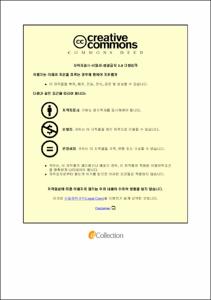중국 단양 방언 한자의 한국어 한자어 발음에 대한 인식 양상
- Alternative Title
- Chinese characters in Danyang dialect of China and pronunciation cognition of Korean Chinese characters
- Abstract
- With the progress of the times and the development of society, globalization has become the mainstream of the future. For the exchange and trade between countries. More and more Chinese are learning foreign languages. Asian countries share similar historical and cultural heritage. It will be helpful for language learning.
The exchange between South Korea and China began in the Tang Dynasty. Before South Korea created its own text. It is the use of Chinese characters to record the culture of one's own country.
After emperor Shizong created characters, South Korea still continued the habit of using Chinese characters. Up to now, Chinese characters have occupied a large proportion in the daily life of South Korean people. It is helpful to learn South Korean through Chinese words. However, with the development of the times, great changes have taken place in the Chinese character culture of the two countries. The differences between simplified and traditional Chinese characters and the changes of pronunciation and meaning of words. It hinders the learning of South Korean through Chinese words.
The first chapter introduces the purpose and necessity of the study. Examples of words in Danyang dialect that sound similar to Korean kanji words. After sorting out related researches, it is found that there is almost no research related to Danyang dialect, and it provides support for the research of this article.
In the second chapter, the phonological system of Chinese Mandarin, Danyang dialect and South Korean is sorted out. By comparing and sorting out the possible phonological correspondence. Made predictions for similarly pronounced Chinese characters.
In the third chapter, the experimental method is introduced and the experiment is carried out. Analyzing the results of the experiment, it is concluded that the pronunciation of Danyang dialect and Korean Chinese characters are very similar.
Finally the paper summarizes the full text and sorts out several knowledge points found in this paper. Looking ahead to relevant research and the influence of this paper on Danyang people's learning Korean.
- Issued Date
- 2021
- Awarded Date
- 2021. 8
- Type
- Dissertation
- Publisher
- 부경대학교
- Alternative Author(s)
- 주윤
- Affiliation
- 부경대학교 대학원
- Department
- 대학원 국어국문학과
- Advisor
- 권성미
- Table Of Contents
- Ⅰ.서론 1
1.1. 연구의 목적 및 필요성 1
1.2. 선행 연구 4
Ⅱ.한국어와 단양 방언의 한자어 발음 대비 7
2.1. 한국어와 단양 방언의 음절 구조 대비 7
2.1.1. 한국어의 음절 구조 7
2.1.2. 단양 방언의 음절 구조 8
2.1.3. 한국어와 단양 방언의 음절 구조 대비 9
2.2. 한국어와 단양 방언의 분절음 대비 10
2.2.1. 모음 10
2.2.1.1. 한국어의 모음 10
2.2.1.2. 단양 방언의 모음 11
2.2.1.3. 한국어와 단양 방언의 모음 체계 대비 17
2.2.2. 자음 18
2.2.2.1. 한국어의 자음 체계 18
2.2.2.2. 단양 방언의 성모 체계 19
2.2.2.3. 자음 대조 분석 22
2.2.2.4. 종성 대조 분석 25
2.3. 한국어 한자어와 단양 방언의 한자어 발음의 유사성과 차이점 26
2.3.1. 유사성이 높은 부류 26
2.3.1.1. 일반 운모 26
2.3.1.2. 입성 운모 27
2.3.2. 유사성이 낮은 부류 28
Ⅲ. 단양 방언 화자의 한국어 한자어 발음 인식 양상 분석 30
3.1. 조사 방법 30
3.1.1. 조사 대상 30
3.1.2. 인식 실험을 위한 단어 목록 및 실험 문장 31
3.1.3. 조사 절차 32
3.2. 한국어 한자어 발음 인식 실험 결과 34
3.2.1. 한자어 발음의 유사성의 높고 낮음에 따른 인식 정확도 34
3.2.1.1. 인식 정확도가 높은 단어 34
3.2.1.2. 인식 정확도가 낮은 단어 36
3.2.2. 문항별 분석 37
3.2.2.1. 일반 운모 37
3.2.2.2. 입성 운모 40
3.3. 단양 방언 화자를 위한 한국어 한자어 발음 교육을 위한 제언 43
Ⅳ. 결론 및 제언 44
참고 문헌 47
부록 50
- Degree
- Master
- Files in This Item:
-
-
Download
 중국 단양 방언 한자의 한국어 한자어 발음에 대한 인식 양상.pdf
기타 데이터 / 1.5 MB / Adobe PDF
중국 단양 방언 한자의 한국어 한자어 발음에 대한 인식 양상.pdf
기타 데이터 / 1.5 MB / Adobe PDF
-
Items in Repository are protected by copyright, with all rights reserved, unless otherwise indicated.